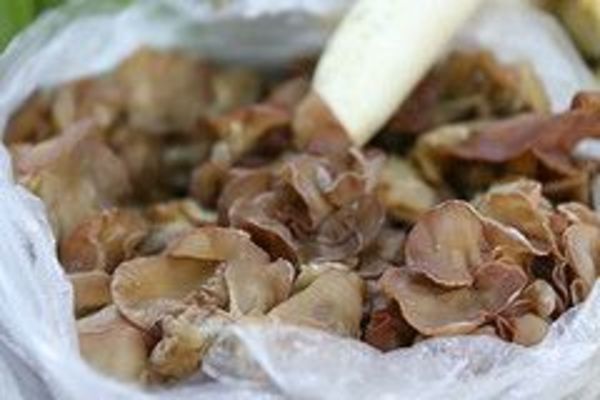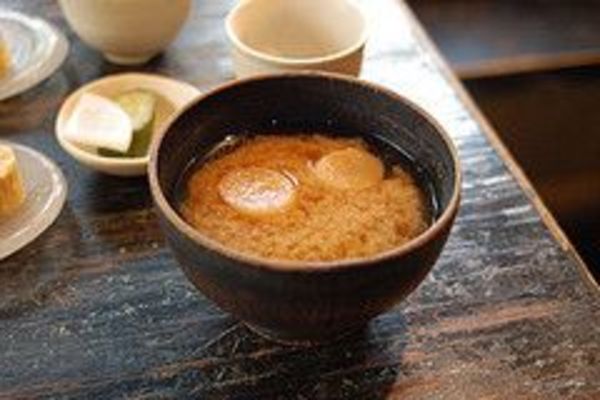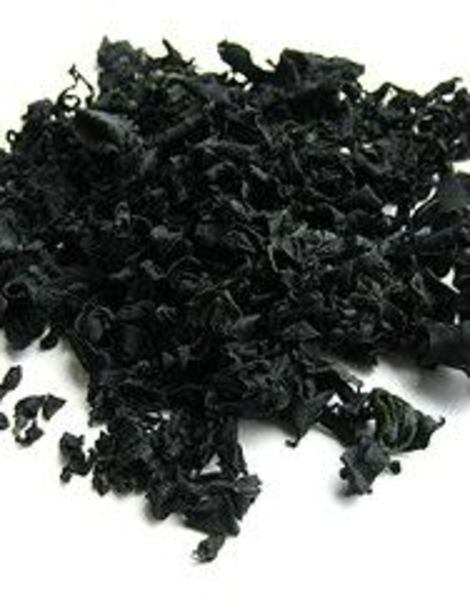7 Good-for-You Foods That Are Hard To Swallow

While growing up, I was somehow convinced that the limp, anemic-looking bean sprouts that sloshed out of a Chung King chow mein can were once live, writhing worms. Although this correlation was clearly a figment of my active childhood imagination, I nevertheless cried a river of tears every time my mother demanded that I eat those soggy, yet purportedly ‘healthy vegetables’. Now that we’re all grown up and capable of making our own sound nutritional decisions, every now and again, it’s always helpful to take a refresher course on new-to-you foods that kick some serious butt. These 7 selections may look all sorts of ugly on the outside, but once they reach your insides, they’ll help to keep the doctor away… so wear a blindfold if you must, but definitely do eat (and drink) up!

WOOD EAR MUSHROOMS
With a fleshy appearance literally resembling some sort of hybridized alien-animal ear (complete with downy hairs and skin puckering), plus a semi-gelatinous mouth-feel, avoiding this highly medicinal fungus seems like the sensible thing to do. In actuality, you’ll be doing your body all kinds of good by taking the culinary plunge… that is, if you want to naturally reduce not only your blood sugar levels but also your bad cholesterol.

MISO
In its deep brown paste form, this integral salty Japanese seasoning doesn’t look terribly appealing but it’s still passable if you don’t know how it’s made. Label readers, on the other hand, could easily be put off by the fact that miso is the handiwork of the fungus Asperfillus oryzae interacting with fermented grains and soy, simply because that just sounds kinda gross. For such a humble culinary condiment, it’s considered a god send in regions struck by nuclear disasters since it can temper the effects of radiation sickness… and the fact that it supports optimum immune function and has been linked to breast cancer protection makes it all the more worthy of your dinner plate!

WAKAME
Plucked straight from the sea, zinc, potassium, iron and vitamin C/E packed wakame is nothing more than an edible type of slippery-sweet kelp that is likened to the flavor of its terrestrial compadre, spinach – it’s also deemed to be one of the world’s most notorious invasive species! It may seem like something best left for the fish, but consuming small amounts of wakame can help to successfully thwart herpes outbreaks as well as constipation, high blood pressure and certain types of breast cancer (if the patient is choosing a natural alternative to chemotherapy) – plus it really keeps the heart and thyroid running in tip-top shape.

TEMPEH
Oh goodness… talk about something getting hit with an ugly stick. It’s never right to judge a book by its cover, but this solid fermented soybean cake doesn’t exactly make it easy with its uncanny resemblance to what might be found growing inside a laboratory Petri dish. Fans rave about the Indonesian staple not only for its earthy-nutty flavor, toothsome texture and ‘shroomy scent, but also for its solid nutritional profile (protein, fiber, magnesium, riboflavin, copper and manganese) and uncanny ability to lower bad LDL cholesterol levels as much as 40% – if only the rest of us could get past its resemblance to compressed insect larvae!

ESCAMOLES
For those who go totally gung-ho for sustainable protein sources, this dandy little taco treat – harvested directly from the roots of Mexico’s tequila and mezcal plants – is in fact Liometopum ant larvae and regarded as the cream of the insect caviar crop with its cottage cheese like texture and buttery-nutty nuances. Very little is specifically written about the nutritional content of escamoles but countless resources go on and on about how healthy fully-hatched ants are – very low cholesterol, very high protein, yada yada yada – and of course, they’re easy on the environment. To think that tempeh made you want to leap out of your skin!

KIMCHEE
In theory, there’s really nothing remotely scary about fermented vegetables. Many of us would happily eat pickled cucumbers all day long, so throwing napa cabbage, green onions, garlic and daikon radishes into the mix sounds like a tastebud tantalizing field day, right? Since this classic Korean specialty – also known as kimchi, kim chee and other variations therein – is typically crammed into a jar, those who are entirely unfamiliar with it might think that the contents look far more like a bloody fetal pig than the sedate yet nutritious plant-based contents within, but chowing down on it will give your body a liberal dose of beneficial bacteria while kicking some types of cancers straight to the curb.

KOPI LUWAK
Wow… sounds pretty exotic, and by all rights, it definitely is. If you’re a coffee aficionado, then this exceedingly rare Arabica brew – which garners a market value of approximately $75 per quarter pound of dry beans – owes its seductive aroma and smooth flavor to the Asian Palm Civet. Oh, never heard of that critter? About the size of a domestic housecat, the forest-dwelling herbivore relishes coffee cherries, which they gamely gobble up and ultimately expel a day later. Then some poor soul is enlisted with the unpleasant task of retrieving said coffee remnants from their… ’nuff said. Apparently, while the beans are passing through the civet’s digestive tract, their proteolytic enzymes render your future cup of coffee free of its often bitter aftertaste. As for what the cuppa does for your body, preliminary studies suggest that in addition to preventing the development of oral, skin and breast cancer, regular kopi luwak drinkers enjoy a 30% reduction in type II diabetes along with less likelihood of nerve disease ailments such as Parkinson’s and Alzheimer’s. Maybe knocking back a shot of tequila prior to your cup of kopi luwak will help it to go down a lot easier!
top image: Little Blue Hen
For more juicy green goodness, follow Elizah via Twitter @elizahleigh

